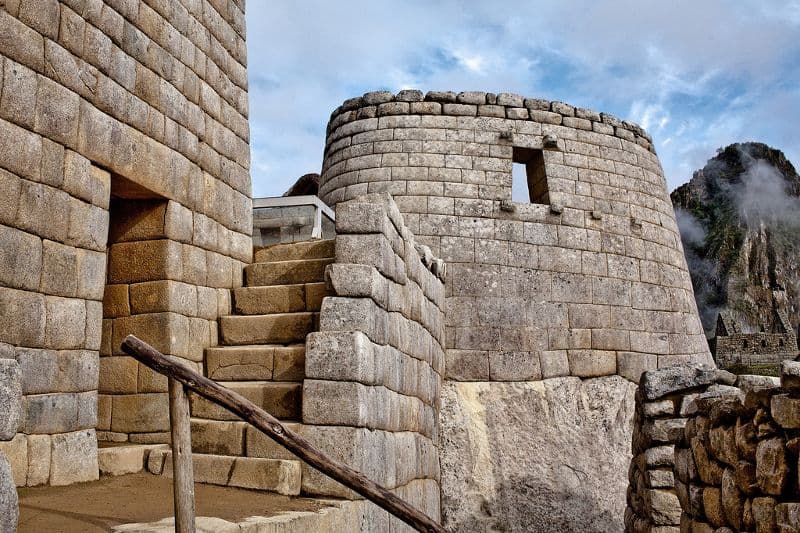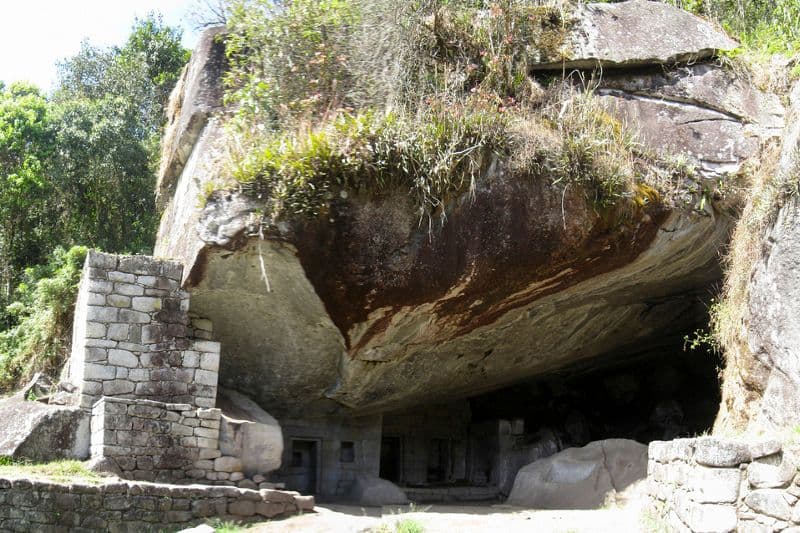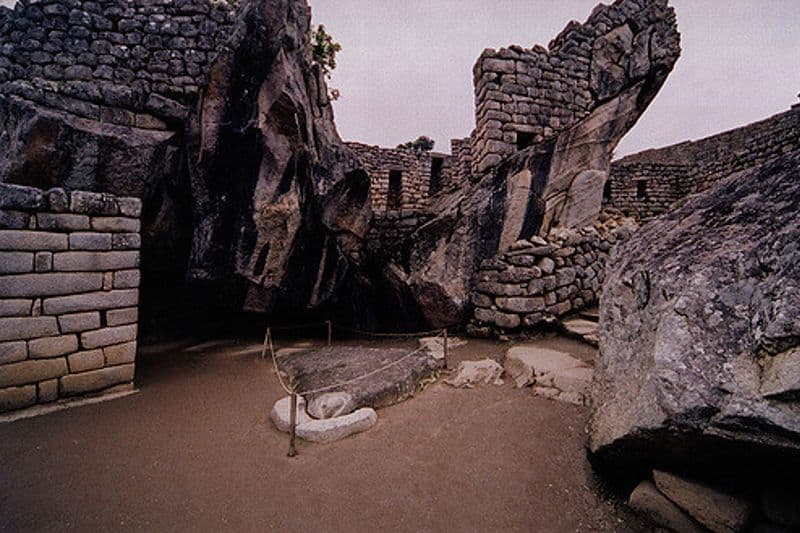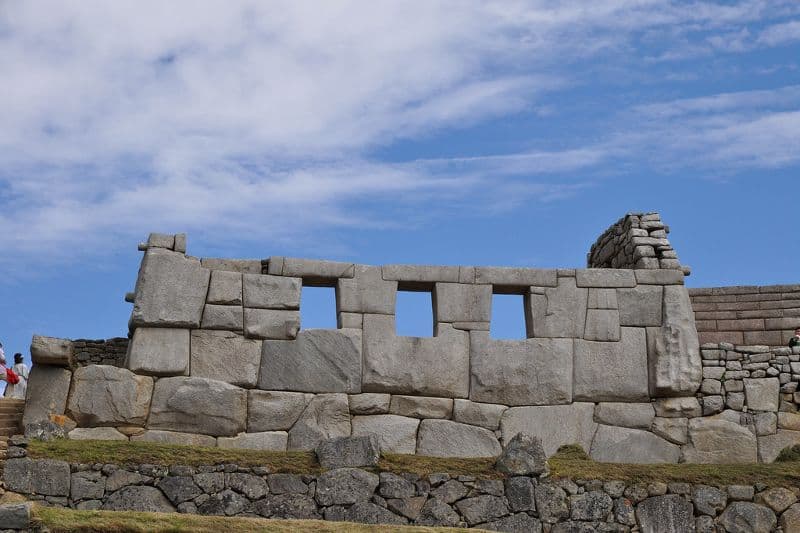The temples of the Inca Citadel of Machu Picchu
The Inca Citadel of Machu Picchu attracts thousands of tourists year after year. The reason is the amazing beauty of its landscapes, the adventure of ascending the mountain Huayna Picchu and the mystery that surrounds its ancient stone buildings. Is that the tour of the archaeological site is a visit that never ceases to amaze locals and strangers alike. Of all its lithic buildings, the ones that call the most attention are the so-called religious temples. Sites that enjoyed great importance such as the Temple of the Sun, the Temple of the Moon, the Temple of the Condor, the Temple of the Three Windows and the Main Temple. What enigmas surround these remarkable constructions? Learn a little more about the temples of the Inca llaqta.
Temple of the Sun
One of the most important buildings of the Inca Citadel of Machu Picchu. It is located in the highest part of the religious sector. Its construction was carried out on a natural cave. To access it, it was ascended by stone steps that lead to a cover where security elements were found to keep it closed. Huge granite blocks were used to make it. The enclosure has a segment of flat walls and a semicircular one. In the latter, there are two windows facing west and north, which served to accurately observe the winter and summer solstices. In the middle of this enclosure, there is a carved stone that served as a shrine to the sun.
According to various studies, the Temple of the Sun had the function of astronomical study point and of worshiping the sun. Only the priests or the Inca himself could access it. It is not by chance that the site was erected in the highest part of the religious sector. According to the Incas, this was ideal for a better relationship with the gods. Such was the importance that some studies suggest that ornaments embedded with precious stones existed there. Below, inside the cave is the royal tomb where, according to the archaeologist Guillermo Lumbreras, the mummy body of the Inca Pachacutec would have been. Throughout time there are signs of looting and even a heavy fire.

Temple of the Moon
One of the most mysterious constructions of Machu Picchu. It is located in the middle of two natural caves on the slopes of the Huayna Picchu Mountain. The American explorer Hiram Bingham named it the Great Cave, however, over the years, the inhabitants called it the Temple of the Moon, a name that gained popularity among tourists until today. Its elaboration was based on the masonry of finely carved stone and in whose center a kind of throne of the same material is erected. Remains of stone around it suggest that the site was not finished. Due to its difficult access location, it was called the ‘Hidden Gem of Machu Picchu’.
The function of this room is still a mystery. It is believed deep in the caves that mummies were embalmed. It is also presumed that religious ceremonies such as payments to the land or sacrifices were made on the altar. To get there you must access the Waynapicchu Mountain and ascend a series of steep steps difficult to travel. Unlike other constructions in the Wonder of the World, few people manage to visit the Temple of the Moon, so it is possible to enjoy this mysterious site for only one. It is located at 2,050 meters above sea level, almost 400 meters above the Inca citadel.

Temple of the Condor
One of the most popular attractions in the Inca llaqta. It is located in the urban sector following a passage from the main square. Instead of an enclosure, this lithic building is a group of stones irregularly carved in such a way that they assimilate the figure of the Andean condor, a sacred bird according to the Inca worldview. The first and largest massif resembles the contours of a bird with outstretched wings. In the lower part of this construction, on the ground, another irregular shape of smaller size was elaborated, which looks like the head of the sacred Inca bird. Joining both rocks carved from an angle, the figure of the Andean condor is obtained. Since then the site was called the Temple of the Condor.
The function of this temple was religious. The discovery of these figures led to denominate the set of nearby buildings as a religious sector of Machu Picchu. The condor represented fertility for the Incas (and for the current inhabitants of the Andes). In the lower part of the immense rock that gives the figure to the bird is an underground enclosure that received the denomination of dungeons. It is believed that these served as a place of punishment for the Inca inhabitants who committed some of the faults punishable by them. According to historians, the Inca Empire punished thieves, liars, and idlers.

Temple of the Three Windows
This enclosure is one of the most mysterious of the Inca Citadel. It is located very close to the main square and the main temple; in the heart of the urban sector. The construction was made with stones of varied size assembled perfectly. Its orientation to the exterior allows appreciating the exit and ascent of the sun. During their discovery, ceremonial pieces such as vases, jars and various sources were found. When Hiram Bingham explored the place he noted in his notebook that he found an inscription on the rocks of the Temple of the Three Windows with the names of Agustín Lizárraga and three other people. They, residents of the surroundings, arrived at the place in 1902, nine years prior to the arrival of the American explorer.

For a long time, hypotheses about the reason for the construction of this temple were created. Its greatest importance lies in its location close to other sites such as the square and the main temple of Machu Picchu. According to the Andean Cosmovision, the number three had an important value. There were 3 Inca worlds: Hanan pacha (upper mute), Kay-pacha (terrestrial world) and Ukju-pacha (lower world). In addition, there were 3 sacred animals: the condor, the puma, and the serpent. According to oral tradition, there were 3 tribes that founded the Inca civilization. Through the Temple of the Three Windows, you can appreciate the splendor of the sun and the majesty of the mountains.
Main Temple
This imposing enclosure is perhaps the most religiously important temple in the Wonder of the World. It is located in the sacred square, in the heart of the urban sector. It is also known as the Sacred Plaza. It’s structure of three large rectangular walls. The one with the most dimension is 11 meters long and 8 meters wide. Some of the stones used are large but all with a fine polish. Due to the passage of time, the main wall deteriorated. In the central part of this, there is a lithic platform of great weight and size which would have served as the main shrine or platform. It is believed that this construction would have meant the representation of the Southern Cross constellation.
At the back of the main wall, there is a small enclosure called ‘the chamber of ornaments’ or ‘house of the priest’. According to some historians, this site could serve as a residence for priests. The Main Temple must have been a center of worship for Wiracocha (also known as Viracocha), the ‘creator God’ not only of the Incas but of many of the ancient peoples of the Andes. Currently, this enclosure is one of the most enigmatic of the Wonder of the World.
The Wonder of the World hides many mysteries to unveil. To know the secrets of the Inca Citadel you must book the Machu Picchu Ticket. This is the only way to get access to the Wonder of the World. Get your ticket now!


